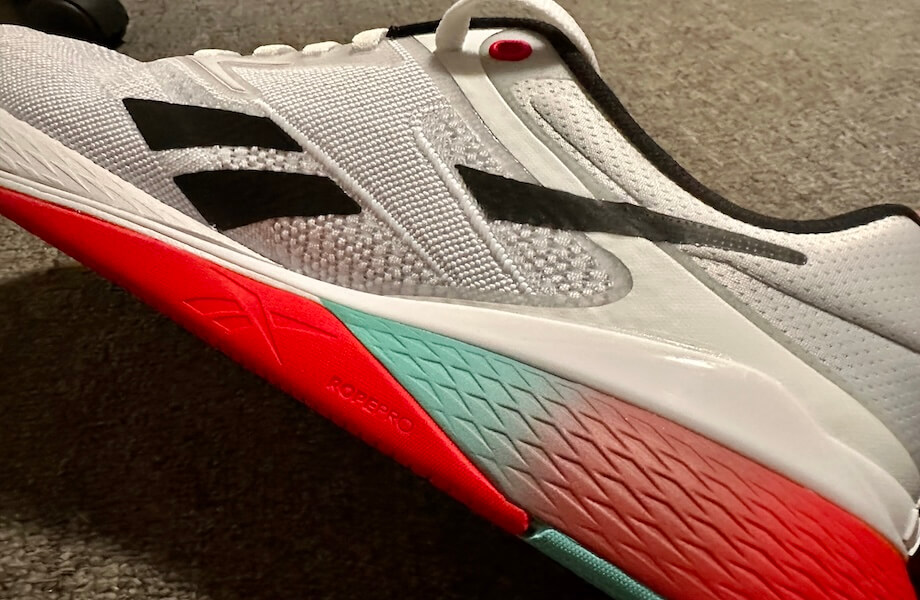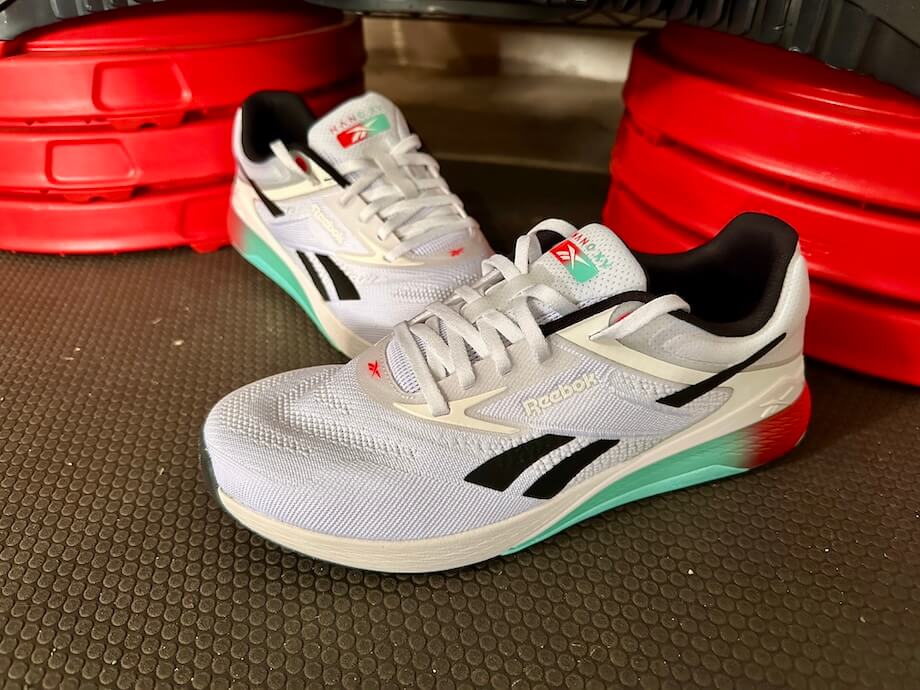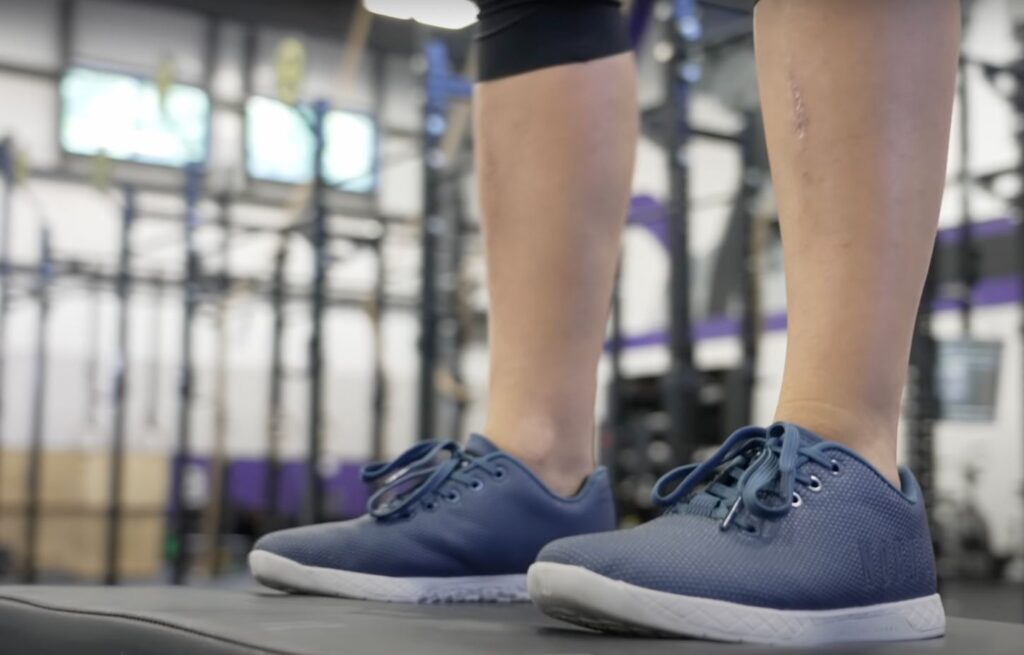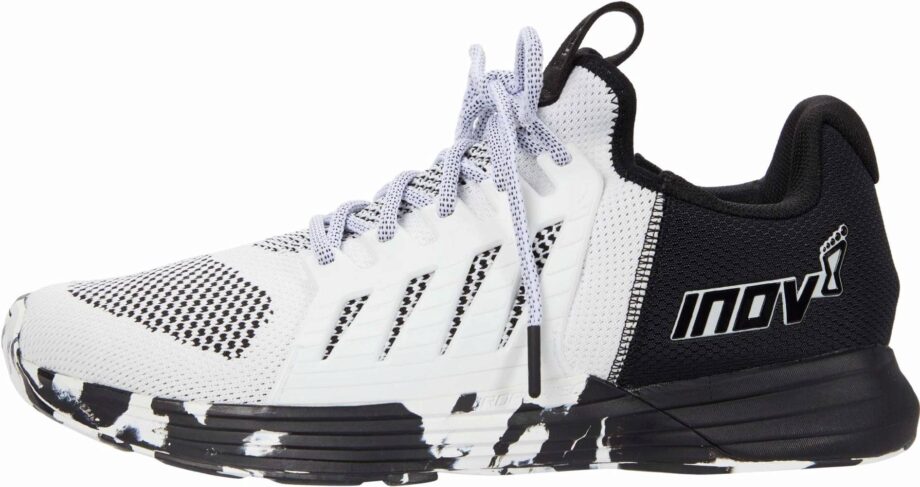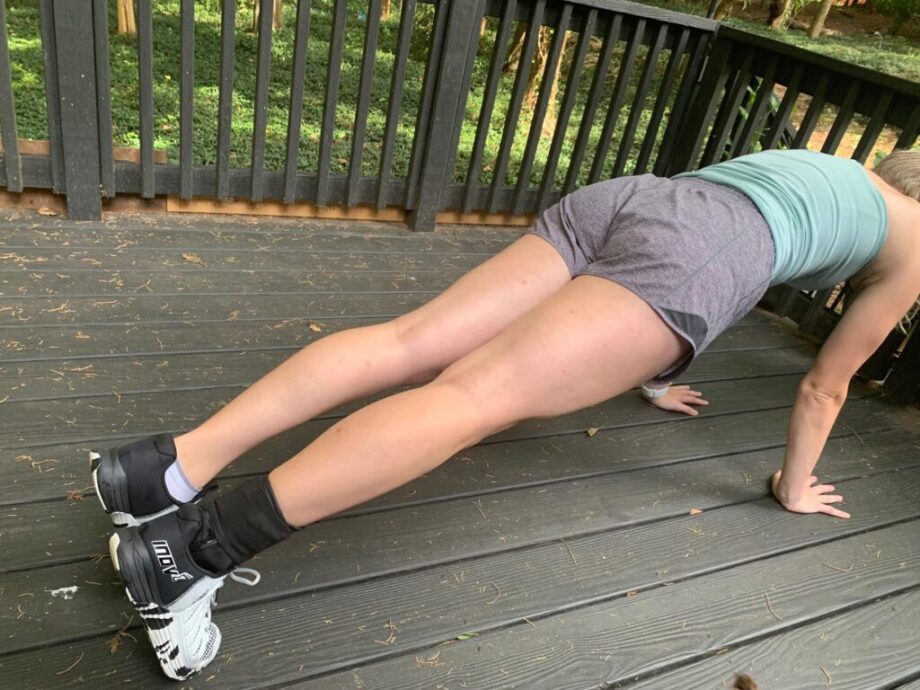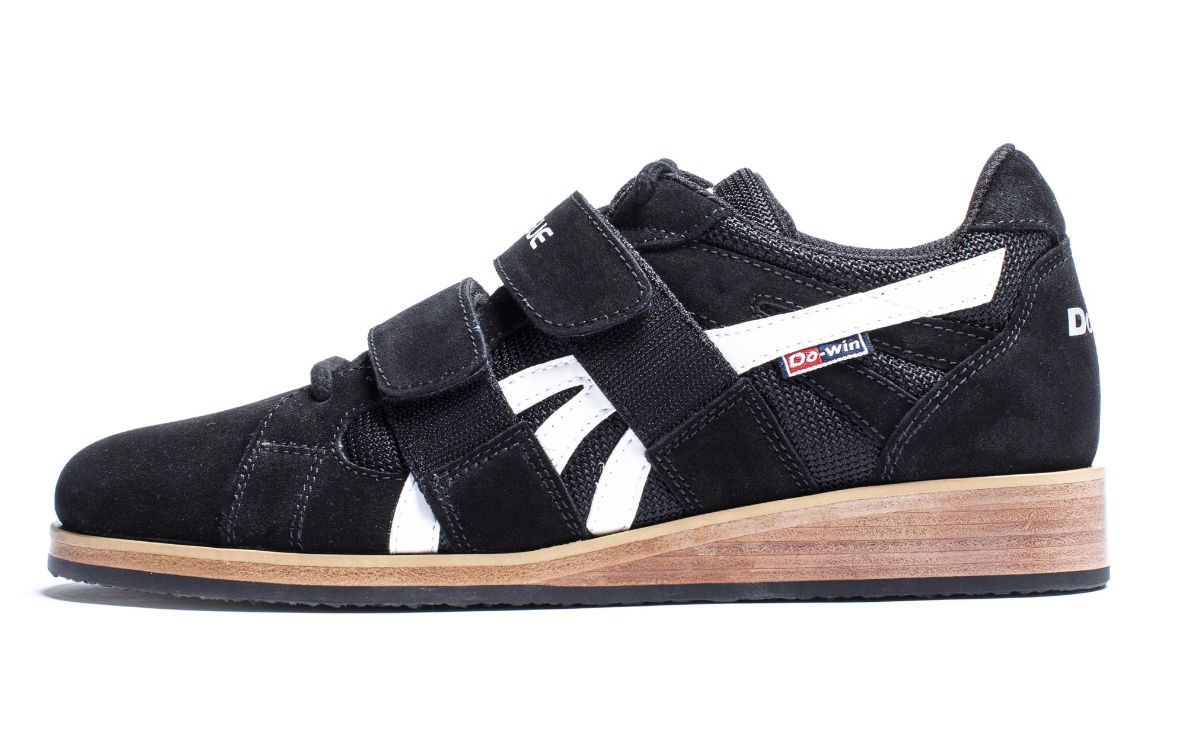Run, jump, power clean, rope climb, and burpee: All your favorite CrossFit exercises are a little more comfortable if you’re in a good shoe. Our team at Garage Gym Reviews has worn and tested dozens of cross-training shoes to determine which are best for the ultimate test of fitness.
Our product testers include me, who has been doing CrossFit for more than a decade, as well as several CrossFit L-1 trainers and the former owner of a CrossFit box. We engaged in a fierce debate over which is the best CrossFit shoe, as we personally tested each one for:
- Functionality: Does it provide good squat support?
- Durability: Can it withstand rope climbs without tearing?
- Breathability: Can those dogs breathe on hot summer days in an un-air-conditioned box?
We tested these shoes on wide feet, on narrow feet, and flat feet, and feet with high arches. We wore them for metcons, lifting sessions, runs and jumps. to offer our recommendations for the very best. The shoes go through an eight-point testing methodology where we evaluate everything from construction and performance to delivery and other user reviews. That’s how we rank and score each pair you’ll find on this page.
8 Best CrossFit Shoes
- Best CrossFit Shoe Overall: Reebok Nano X5
- Most Versatile Shoe: NOBULL Outwork Shoe
- Best Value CrossFit Shoe: Nike Metcon 9
- Best Budget CrossFit Shoe: Converse Chuck Taylor All-Stars
- Best CrossFit Shoes for Running: Nike Free Metcon 6
- Best CrossFit Lifting Shoes: Reebok Lifter PR III
- Best CrossFit Shoe for Wide Feet: Inov-8 F-Lite G 300
- Best Weightlifting Shoes: Rogue Do-Win Classic Lifter
Video Review

Best Crossfit Shoe Overall: Reebok Nano X5
Good for: Virtually anyone with any size foot who wants to WOD
Like previous Nano silhouettes, the Nano X5 is a solid workout shoe best for resistance training protocols, plyometrics, and short cardio demands like sprints or treadmill runs. The new DUALRESPONSE EVA Midsole provides versatile cushioning for dynamic and static movements, and the overall look continues with the Nano’s reputation as a stylish kick both in and out of the training center.
What our tester says:
“If I didn’t want to preserve these for in-gym training, I’d easily add them to my rotation of walking shoes. The midsole is that comfortable.”
If you’re looking for a versatile shoe that can handle any type of workout you throw at it, look no further than the Reebok Nano X5, our pick for the best CrossFit shoe overall.
The Reebok Nano series continues to impress, and the X5 is no different. Reebok has taken an already fantastic shoe, the X4, and made a few key upgrades to improve the overall comfort and training experience.
GGR Staff Writer Ben Emminger, NASM-CNC, NASM-CSNC, tested out the Nano X5 and was very impressed with how they performed in a variety of workouts. Whether he was lifting weights, working on his agility, or even going on runs, the Nano X5s got the job done.
“The Reebok Nano X5s are some of the most versatile Nanos I’ve laced up in recent years,” says Ben. “In the gym, these shoes performed as expected, providing a stable, secure base for static lifts with enough responsiveness and comfort to support multidirectional movements. What earns these kicks a 4.75 out of 5 rating, though, is their ability to support my running demands.”
Most Versatile Shoe: NOBULL Outwork Shoes
Good for: Wearing in and out of the gym
NOBULL Outwork shoes are a versatile and durable cross-training shoe with minimal support. Available in some unique colorways, these shoes have a low effective heel height and are ideal for people looking for a minimalist shoe.
What our tester says:
“When I initially put these on, I didn’t like the feel. The bottom felt hard, and I’m used to weightlifting shoes. However, once I got to working out with them, I really liked them. I did workouts that included running, jumping and squat cleans, and I never felt uncomfortable in the shoes.”
Best Value CrossFit Shoe: Nike Metcon 9
Good for: Support, breathability and agility in training
The Nike Metcon 9 training shoes were released in August 2023 and build upon the Nike Metcon 8s with an enhanced rope guar wrap-around, plus a larger and more rigid crash pad. They feature a tightly woven and durable, but breathable, upper. The patterned, grooved outsole provides great traction during most weather conditions.
What our tester says:
“The Hyperlift plate and rigid heel is a huge positive for weightlifting, but not so much for running. If you’re planning on doing a lot of running, you’re probably going to hate this shoe—just being honest.”
Best Budget CrossFit Shoe: Converse Chuck Taylor All-Stars
Good for: An affordable, lightweight shoe useful for cross training
A classic shoe that performs well on the powerlifting platform and the streets, Chuck Taylors provide great stability for pulling heavy lifts from the floor, and come in a variety of colorways as well.
What our tester says:
“They are a staple in my gym bag, and I won’t work out in anything else for lower-body days. I love how flat they feel when I’m deadlifting or doing RDLs, as they just feel more stable.”
Best CrossFit Shoes for Running: Nike Free Metcon 4
Good for: People with narrow feet who enjoy feet hugs while running
The Nike Free Metcon 6 is a versatile, multi-purpose shoe that can be used for lifting, running, and everything in between.
Best CrossFit Shoes for Barbell WODs: Reebok Lifter PR III
Good for: CrossFitters who want to wear weightlifting shoes in a WOD
An incredibly affordable weightlifting shoe that’s good for one thing—weightlifting.
What our tester says:
“These shoes are a bit more responsive than you’d usually want a dedicated lifting shoe. As a budget shoe or cross-training shoe, this should still be fine.”
Best CrossFit Shoes for Wide Feet: INOV-8 F-Lite G 300
Good for: CrossFitters who have a wide foot and want a comfortable shoe
The F-Lie G-300s are perfect for people with wider feet or those who need a shoe that won’t take long to break in. Though it’s in limited colorways, the shoe is extremely lightweight, which will feel nice during jumps and sprints.
What our tester says:
“I wanted to be able to tighten the laces on these a bit more, but I have narrow feet so others may not run into the same issue.”
Best Weightlifting Shoes: Rogue Do-Win Classic Lifter
Good for: People looking for a quality, budget-friendly weightlifting shoe
The D0-Win is a classic weightlifting shoe offered at a reasonable price. It’s great for beginners, but may not have the best longevity with heavy usage.
What our tester says:
“The Do-Win Classic Lifter is a great shoe from a performance standpoint, and it’s a competitively-priced product when compared to some of the top performers out there. Those two things would make it an incredible value, but we wish they were a little more comfortable and lasted a little longer. “
Other CrossFit Shoes We’ve Tested and Researched
We have a few other shoes we tested and liked (and some we don’t love at all):
Reebok Nano X1: These were our top pick before the Nano X2 came out. We like the X2s more thanks to the lower heel cup and more flexible forefoot.
Reebok Nano X2: Still a great shoe if you can find it.
NOBULL Trainer Plus: This is a new version of the NOBULL Trainer that’s much “chunkier” with a thick EVA midsole and deeper outsole lugs. Our product tester Amanda loved these for everyday, casual wear, but not as much as the regular Trainers for working out.
RELATED: Best Shoes For Standing All Day

Reebok JJ IV Men’s Training Shoe: It’s actually a pretty decent shoe–if you’re a guy with big feet. JJ Watt is a big dude, so he needs big shoes. The JJ IV give a lot of space and support for cross-training workouts. These were a little hard for us to test, just because none of us are quite big enough to fill these shoes.
Nike Romaleo 4: This is arguably the best weightlifting shoe on the market right now. Nike killed it with the Romaleo 2s, then hit a setback with the 3s, but came back with the 4s to produce a heavy, wholly supportive shoe. However, this isn’t a shoe to wear in CrossFit workouts, which is why it didn’t make our list. Also, it’s expensive around $200.
Under Armour HOVR: I just didn’t like these. Under Armour hasn’t really figured out the cross-training shoe yet. Maybe next time.
Inov-8 F-Lite 235 V.2 or the Inov-8 F-Lite 235 v3: Inov-8 has produced great trainers for years, but their latest releases lack durability and lack overall comfort. We hope Inov-8 continues to innovate as we are overall big fans.
How We Tested and Picked the Best CrossFit Shoes

The shoes we picked to test could all be considered great for CrossFit and general training. Granted, some of the shoes we tested simply won’t work for certain people either due to the looks or fit, but our picks should work for the majority of people. After some deliberation, we narrowed down our specifications to the following list of features ordered in no particular order.
Overall Construction
The shoes we recommend are some of the best available and are often priced as such. They should be constructed with high-end materials and last a minimum of 6 months under heavy training conditions. We assessed factors specific to CrossFit, such as:
- Do they provide support on squats?
- Is there a rope guard to keep the shoe from falling apart on rope climbs?
- Can you use this for running, jumping, and lifting weights?
Value
We know that some of the best CrossFit shoes sit around $150. Look, we like paying for quality, as long as quality is there. The price of the shoe should be in alignment with its performance. If a shoe costs $150 but performs just as well as a $100 shoe without any outstanding features, then it has poor value.
Appearance
We understand that this is a subjective quality and as such, it plays a small part in which shoes we chose. Rather than basing it solely on our views of the shoes, we also took the opinions of others as to which are the most aesthetically pleasing. We also factor in your ability to choose from a number of colorway options.
Fit
There are a few things we look for with fit. The first is that the shoe comes in a wide enough array of sizes to accommodate most people. Shoes mostly fit depending on the dimensions of your feet, so, we tried to choose shoes that fit the widest range of people. All of our top picks can be used by those with thin or wide feet and combine a locked-down feel with great comfort.
We also reported back on if the shoes fit true to size. You’ll often find that you need to size up or down half a size.
Comfort
If you train as much as we do, you’re going to be spending a lot of time in these shoes. They should be comfortable both during training, runs, and after training.
Versatility
A CrossFit shoe should not just work well in the gym doing burpees and squats, but also outside of it as well. This includes short-distance runs as well as dragging and pushing sleds as well as ruck marches.
Special Features
As CrossFit evolves, so should the specialization of the shoes designed for the task. Obviously, CrossFit hits a wide range of movements, so the shoes will always be more for generalized training. However, things like heel clips and rope guards are important to keep the shoe performing well.
During testing, we performed various workouts: long, short, and in between. We squatted, deadlifted, box jumped, wall-balled (is that a word?) clean and jerked, snatched, ran, and did many other movements that might be included in your CrossFit WODs.
We did heavy lifting as well as EMOMs, AMRAPS, and lots of metcons. We requested the opinion of many different people including a couple of CrossFit Games Athletes without shoe sponsors (to avoid biases.)
How to Choose the Best CrossFit Shoe

If you’re looking for the best shoes for CrossFit, there are a few things you need to keep in mind. Sure, you can swing a kettlebell in just about anything, but you want something to help you perform well across all aspects of fitness, like lateral movements and heavy lifts. Here are what we see as being big factors:
Durability
CrossFit can be hard on our bodies, and it can be really hard on our shoes. An all-mesh upper or soft sole could get totally torn up. Just one rope climb can rip the bottom off a shoe, no problem. Strapping into a rower or running outdoors can put wear and tear on the outer layers. The average amount of time manufacturers recommend you get out of your shoes is about 7 months of normal use.
Look for a shoe that has a reinforced bottom for those rope climbs and a reinforced heel for the abrasion that comes from doing handstand pushups against a wall. In many cases, manufacturers add thermoplastic polyurethane, or TPU, to the sidewalls, heels and upper for added durability. Also, a lot of companies, like No Bull and Reebok, do a good job of providing a breathable upper that is perforated but still coated or reinforced so it won’t rip at the first sign of friction.
Rigid Sole
Perhaps one of the most noticeable differences between CrossFit shoes and, say, running shoes or other cross training footwear is the sole. A harder sole is key for powerlifting, Olympic lifting and squatting movements. It gives you feedback in explosive movements and stability in the power movements.
Weightlifting shoes like the Nike Romaleo 4 or Do-Win Classic Lifter have a much more rigid sole than shoes like the Reebok Nano X or X1. We aren’t suggesting you wear weightlifting shoes, but, rather, find a training shoe with a more rigid sole.
Heel Drop
Generally speaking, an elevated heel is great for getting into a squatting position in which your knees can travel forward over the toes. That is ideal body mechanics, whether you are hitting an air squat in HIIT training or working on barbell exercises and doing weighted squats.
Weightlifting shoes have a large heel-to-toe drop of about 20mm. CrossFit shoes typically have about 4 to 6mm, but many shoes come with a removable and additional insole that can get you to about a 10 to 12mm drop. One of the big changes of CrossFit shoes from traditional training shoes is the more minimalistic style. A 0mm heel drop would make your foot parallel to the ground. Although there are few with a 0mm heel drop, there are many that are close.
Cushioning
Now, we need to balance out the rigid sole and heel drop with some cushioning, because you still need to run and jump in these shoes. This is a fine line, because too much cushioning means your shoe absorbs weight in lifts instead of giving you the feedback to push off from. Too little cushioning, however, like the minimalist line from Vibram, can be painful for people who need more support.
Cushioning in a trainer shoe is ultimately pretty personal. Most shoes like the Metcon from Nike or the Reebok CrossFit Nano line strike a good balance.
Wide Toe Box
Too narrow of a shoe will be incredibly uncomfortable while running. Too wide of a toe box will make you feel a little lost in the shoe, wondering where your support is as you’re cycling the barbell.
In our experience, Nike shoes tend to run a little narrower, Reeboks give the most room, and No Bull feels in between. The good news is that all these companies take returns, so you if you order online or via Amazon, you can try and send back shoes that don’t fit right.
Lateral Support
CrossFit shoes aren’t exactly known for comforts like arch support, but it is possible. Of course, you can always take out the insoles and replace them with your own. Alternatively, look for cross trainers with more cushioning, as that might provide the support you need.
You’ll notice that many shoes designed for CrossFit have a wider toe box and this is to allow you to splay your toes when doing grounded movements like squats. Some shoes feature tongues that are stitched to the sole and are secure without even being laced, while others require you to crank them down.
Price
Finally, the price of the shoes should be a factor. No matter how good a shoe is, its price should be a criteria for whether it’s chosen or not. Rather than say shoes are expensive or cheap, we like to look at the value. If the shoe is costly, does its performance match up? If not, then it is overpriced.
With so many great options today, it’s unlikely that a $200 pair of shoes designed for CrossFit are going to be that much better than the $130 pair.
Best CrossFit Shoes FAQs
What are the best shoes for CrossFit?
The answer to this is fairly subjective, but typically you live in either the Reebok Nano or the Nike Metcon camp. We like both, and the Nano X5 edged out the Metcon 9 solely because we believe that the Nanos might fit more feet than the slightly more narrow Metcons.
Our other top picks are:
–Most Versatile Shoe: NOBULL Outwork Shoe
–Best Budget CrossFit Shoe: Converse Chuck Taylor All-Stars
–Best CrossFit Shoes for Running: Nike Free Metcon 6
–Best CrossFit Lifting Shoes: Reebok Lifter PR III
–Best CrossFit Shoe for Wide Feet: Inov-8 F-Lite G 300
–Best Weightlifting Shoes: Rogue Do-Win Classic Lifter
Can you run in CrossFit shoes?
Yes, the best CrossFit shoes are designed for all kinds of exercise: lifting, running, jumping. Some have great lug soles for gripping the ground during runs, some have an extremely flexible forefoot, some, like the Nike Free Metcon 4, is literally a combination of a running shoe and a shoe made for lifting weights.
What makes a good CrossFit shoe?
A good CrossFit shoe is one you can use to run, jump, climb ropes and lift weights. A more rigid sole is great for weightlifting, an elevated heel (even slight) is ideal for squatting, a flexible forefoot makes for good running and jumping, and a reinforced sole and heel is ideal for durability.
Are CrossFit shoes worth it?
Here’s the thing: You can grab a pair of Asics or New Balance shoes and hit the box. It’s doable and possible and people all over the world do CrossFit in shoes that aren’t your typical “CrossFit shoes.” Shoot, some people do it barefoot!
However, having the right shoes for the sport can help you feel better, and, in turn, perform better. An elevated heel and an appropriate amount of cushioning assist in the breadth of movements we do in CrossFit. Also, some shoes just can’t stand up to the sport and will literally fall apart. I recommend investing in a comfortable, durable pair of shoes if you plan on exercising often.
References
- Pangan, A. M., & Leineweber, M. (2021). Footwear and Elevated Heel Influence on Barbell Back Squat: A Review. Journal of biomechanical engineering, 143(9), 090801. https://doi.org/10.1115/1.4050820








